
The Saga of the Hemlock Tree
By Leonard Oliver Nasman, copyright 2006
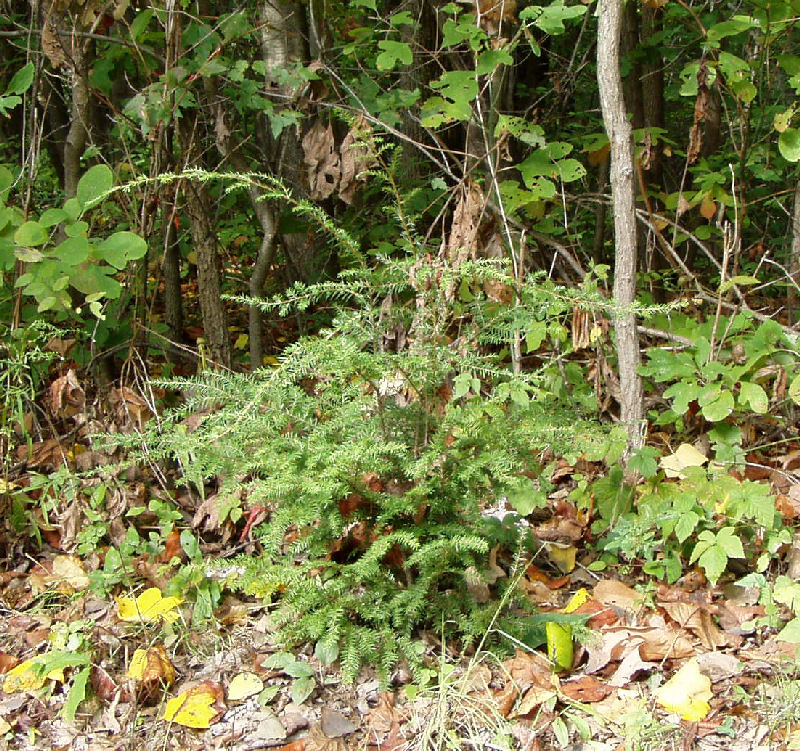
My Hemlock Tree (in 2002)
Once upon a time I was a boy who spent most of his free time roaming through the woods of northwestern Pennsylvania. I grew up in the small town of Kane, PA, that lies in the heart of the Allegheny National Forest.
We lived at the edge of town and all I had to do to get to the forest was to walk past one house and cross the street. Once in the woods, it would be possible to hike nearly 30 miles north to New York State, with the only signs of civilization along the way a few forest roads and an occasional oil well or pipeline.
A few miles north of here, you can access the North Country Trail and hike along it to eastern New York state or west to North Dakota. (As a matter of fact, the North Country Trail also passes a couple of miles from Woodhaven, and also passes through Scioto Trails State Park, 5 miles north of our home in Bristol Village.)
The Kane area woods was a great place for a boy to explore and imagine himself as a great woodsman, or mighty hunter, or skilled trout fisherman.
A common tree found in this part of the world is the Hemlock (also sometimes known as the Canadian Hemlock or Eastern Hemlock). By my time, the lumber companies had cut the trees in the forest several times. The locals in those days referred to the woods as being 'third growth' as a way of describing how far removed the forest was from the way it was when the European settlers started displacing the native people of the area.
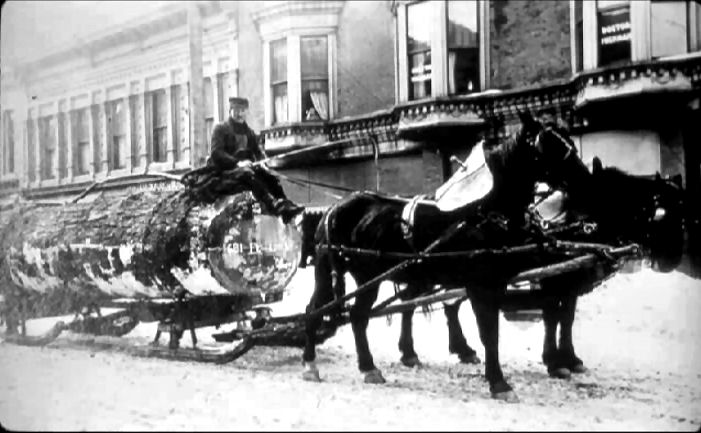
There remains one large tract of 'first growth' timber several miles west of Kane in an area known as the Tionesta Scenic Area. (Locals call it 'Big Timber.') There you can get an idea what the country looked like several hundreds of years ago before the trees were cut. In addition to the ancient maple and beech trees at Big Timber, there are many magnificent giant hemlocks. Another place that has preserved many large hemlocks is Cook Forest State park 30 miles to the south.
In my woods, there were many large hemlocks that had survived the lumberman's saws. There were also many more hemlock trees of every size.
Every fall, my dad, Oliver Nasman, would grab a couple of gunny sacks and head for the woods to find smaller hemlock trees that grew on the edge of clearings.
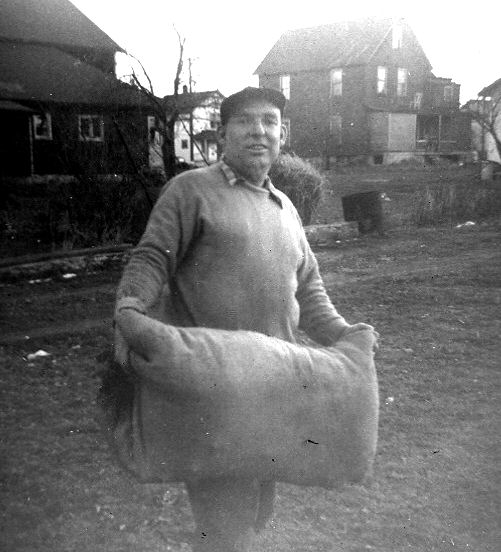
He would clip 8 to 12 inch lengths of hemlock branches and pack them into the sacks for later use in making Christmas wreaths and roping. I filled quite a few sacks myself and dragged them home to add to the collection. This spare time effort funded Christmas gifts and our annual summer vacation trips.
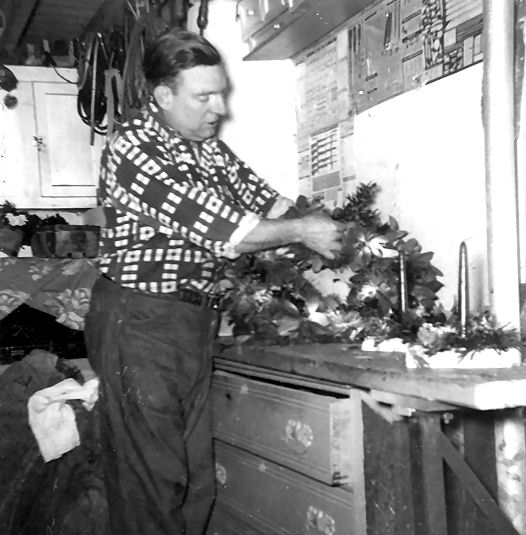
To keep the branches fresh until the holiday season, my dad rigged up a shower head in a cool room of our hand-dug basement. Every few days he would wet the sacks, some of which contained hemlock boughs, some ground pine, and some mountain laurel. This was the raw material for the decorations he would spend many autumn nights creating.
One weekend, when I was a still a kid, (but old enough to baby sit for myself), and my parents were off to a Swede dance somewhere, I decided to surprise them by making a bit of roping myself. I never had any lessons for the job, but I had watched my dad making roping using a crude machine and it did not look like it could be too hard.
This machine had two spools of wire. One wire passed straight along the length of the machine and was the support core for the roping. The other wire passed through a hollow metal tube that was bent to form a crank, and had a half circular piece of bent metal on one end that formed a sort of cradle where the hemlock branches were placed. When you turned the crank, the second wire wrapped the branches to the first wire. By pulling the branches as you turned the crank, and by carefully feeding new branches into the machine, you could produce yard after yard of finished roping.
By the time my folks got home, I had a nice pile of roping growing beside the workbench. Instead of getting heaps of praise, or possibly a raise in my allowance, my dad looked at my roping and said "Your roping is too flat. When you add branches you have to turn the branches back and forth so they won't all have the same side up."
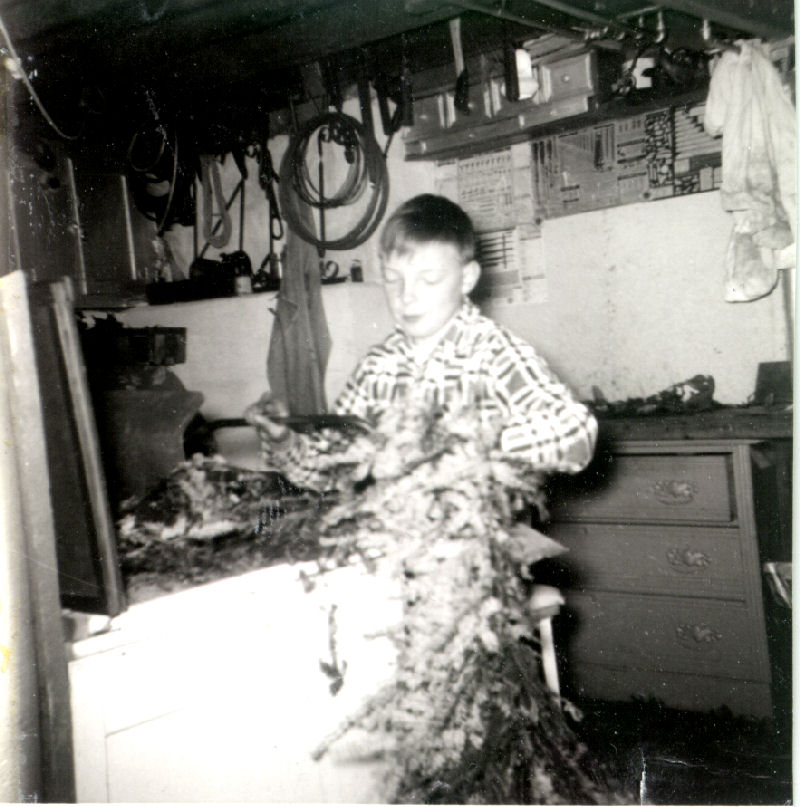
As far as I remember, my dad never made another yard of hemlock roping.
He would wrap wreaths while I was left to concentrate on producing the hemlock roping. Each year for several years the town of Kane bought 1,000 yards of hemlock roping from us. They added lights and hung the roping over the streets of the town. We sold another 1,000 yards or so to folks from the area who used it to decorate their houses.
So, from an early age, the hemlock tree had an important place in my life. In the woods, the tiny seed cones of the hemlock provide food for squirrels and birds. The small thin needles are fairly soft, and when the branches are crushed, you are treated to a nice piney perfume.
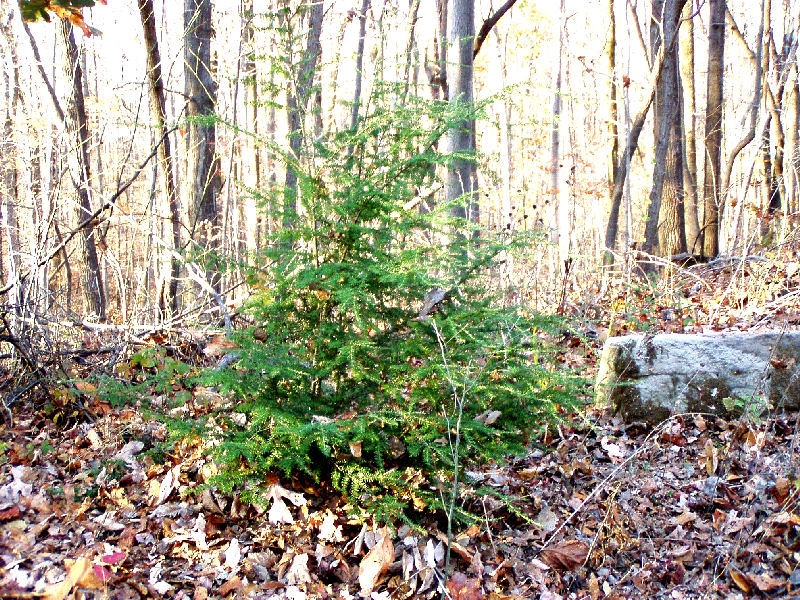
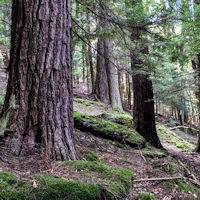 Once upon a time when I was older and was visiting Kane, I took a hike through my old woods. Along the way I pulled a couple of tiny hemlock seedlings from the mossy forest floor and stuck them in a shopping bag for the trip back to Ohio. Then, I planted them in pots and put them in the garden to see if they would grow. After they survived for a couple of years, I transplanted them at Woodhaven
with dreams that someday they would be huge magnificant trees like those
in the old growth forests of the north country..
Once upon a time when I was older and was visiting Kane, I took a hike through my old woods. Along the way I pulled a couple of tiny hemlock seedlings from the mossy forest floor and stuck them in a shopping bag for the trip back to Ohio. Then, I planted them in pots and put them in the garden to see if they would grow. After they survived for a couple of years, I transplanted them at Woodhaven
with dreams that someday they would be huge magnificant trees like those
in the old growth forests of the north country..
Hemlock trees are not nearly as common in Ohio as they are in Pennsylvania. There are a few stands of them found in the narrow valleys of the Hocking Hills, but there were none to be found in the Woodhaven Woods. Only one of my baby trees survived. It held on for a few years until by the summer of 2006 I was very happy that it had finally gotten as tall as I was.
But in the fall of 2006, a hemlock tragedy struck. My prize hemlock was attacked by a deer.
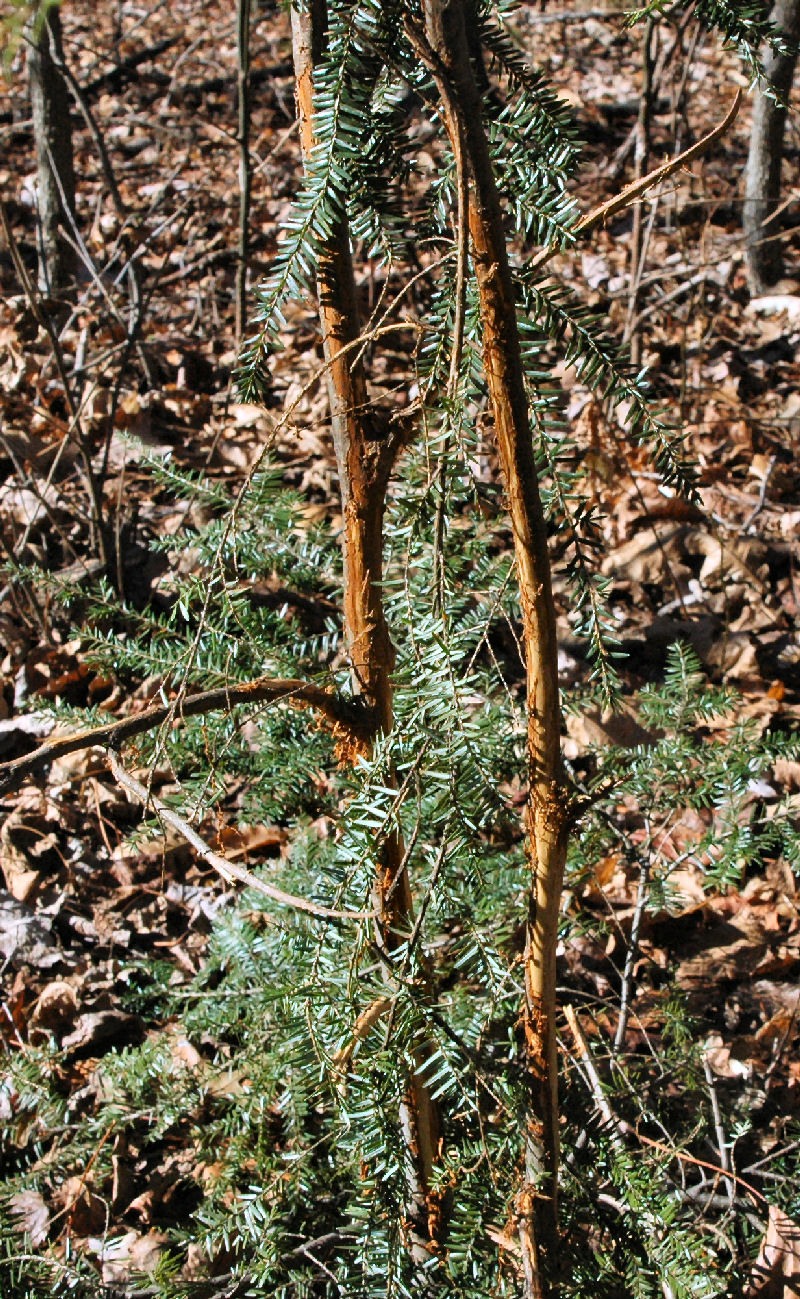
The Whitetailed Deer lose their antlers in late winter, and grow new ones each summer. As the new antlers grow they are covered with fur-like velvet.
 In the fall, the antlers get as hard as bone and the deer feel the urge to scrape them on trees to remove the last of the velvet, and to show any other bucks in the area just how big and tough they are.
In the fall, the antlers get as hard as bone and the deer feel the urge to scrape them on trees to remove the last of the velvet, and to show any other bucks in the area just how big and tough they are.
Unfortunately, one very rude deer chose to sharpen his antlers on my beautiful hemlock tree.
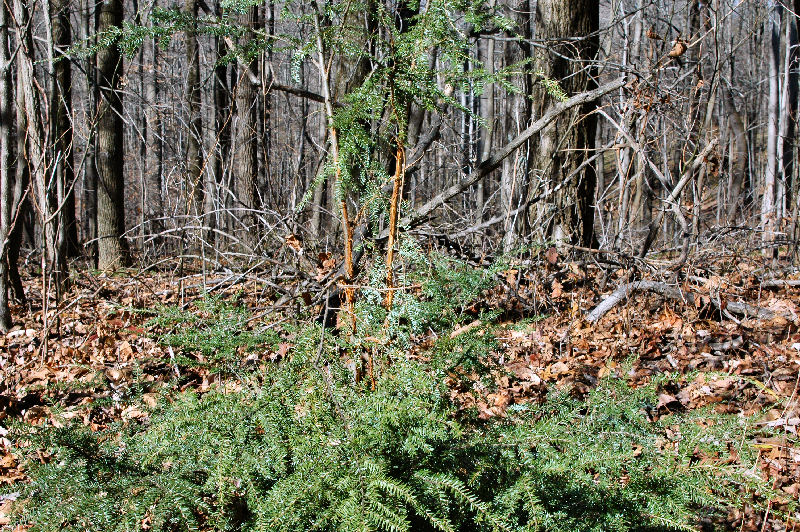
The result was that much of the bark has been scraped from the tree and a number of branches have been broken.
Will it survive this attack? I hope so. However, at the best it will have to grow anew from the base. Only time will tell if it will regain its past glory and grow onward and upward to the heights of dreams.
